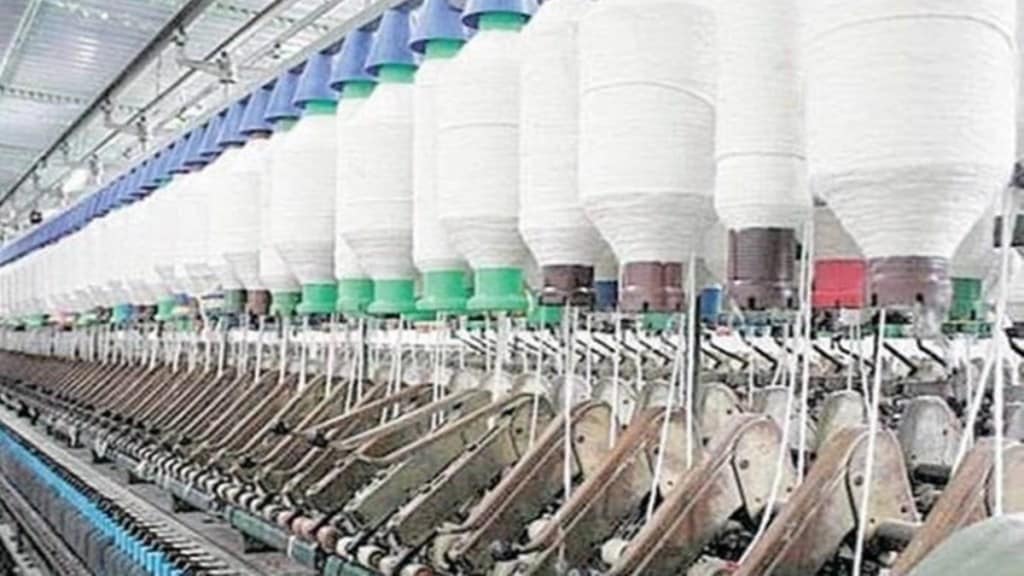It is a scorcher of a summer for Surat, the largest textile cluster in the country with demand for textiles showing no signs of revival since the festive season of Diwali last year. Industry sources said the situation is so grim that around 5,000 of city’s small traders who conduct their businesses from rented premises are finding it difficult to even renew their rent agreements.
Gautam Dhamsania, Spinners’ Association Gujarat (SAG), said, “The textile demands from European Countries and from America has reduced to around half of the average demand at this time of the year. While the ongoing Russia-Ukraine war has taken a toll on demand in European countries, recessionary headwinds are responsible for lower demand in America.”
Not only that, Dr Ashwin Thakkar, head, vice-president, Textile Association of India (Ahmedabad), attributed this subdued performance of the textile industry to “the change in consumption pattern after the Covid pandemic which has changed the consumption patterns. Consumers are spending more on lifestyle goods like healthcare and travel which has suppressed textile demand. The pandemic has also changed the costing pattern of the industry. The workers who migrated due to the lockdown have not all come back. This has led to shortage of labour which has increased the cost of production overall.”
Bhavin Parikh, managing director of Ahmedabad-based Globe Textiles (India),a medium-sized textile player of Gujarat with estimated sales totalling `383 crore annually, also echoed similar views on the changed consumption patterns of consumers. “Inflation in most of the developed countries has also decreased the spending power of consumers. The earnings and the inflation rate are not in sync with each other. Additionally the uncontrolled and rapid rise of cotton prices last year ( `60,000 -65,000 in May-June last year to `1,10,000 in November) is one the reasons for the dire straits the industry finds itself in,” he said.
Furthermore, Parikh maintains that the price rise has been “pretty rapid and no one was able to pass on the prices reasonably. As a result of that, the producers ended up having an inventory of high priced goods.” Though synthetic fabric manufacturers are also facing problems, it is the cotton textile traders who are facing the brunt of the situation. “If the prices of cotton had been kept in control then the situation could have been different,” Parikh lamented.
What has aggravated the crisis in the Indian textile sector is steep cost of textile production in India which is being challenged by countries like Vietnam, Jawa and Bangladesh as the labour cost in these countries is significantly lower than that of India. “Because of high costs in India, fabric from these countries is Rs 10 to 12 per meter cheaper than the Indian fabric”, said Jayantbhai H Patel, vice-chairman, Textile Association of India.
Dhamsania of the Spinners’ Association of Gujarat, said, “The yarn export from India has seen a reduction of around 30% in recent weeks. The yarn spinning units in Gujarat and North India are working at their full capacity for now. But the scenario is expected to worsen in the coming weeks since textile units in South India are already not working at their full capacity.”
In view of the looming crisis Dhamsania suggested urgent steps should be taken by the government. “The Textile Ministry needs to look into the import-export policies so the Indian players can have a level-playing field. Additionally, we need to develop new cotton seeds as soon as possible. Our yield per hectare is only 60% of the world’s average yield. If we are able to produce high quality seeds, it will improve our yield and double the cotton production and farmers’ income. These steps will ensure that our industry is in a position to compete with global players.”
Parikh of GTIL added, “If we want the initiatives like ‘Make in India’ and ‘Made in India’ to be successful, it is mandatory to provide domestic players the means to compete with global players. To achieve that, a system of quality, quantity or price cap could be applied to the imports. This will help us have the benefits of value addition and job creation.”

